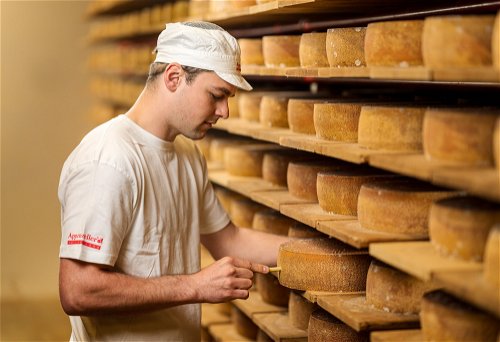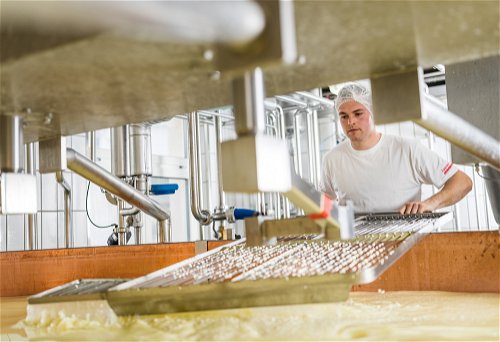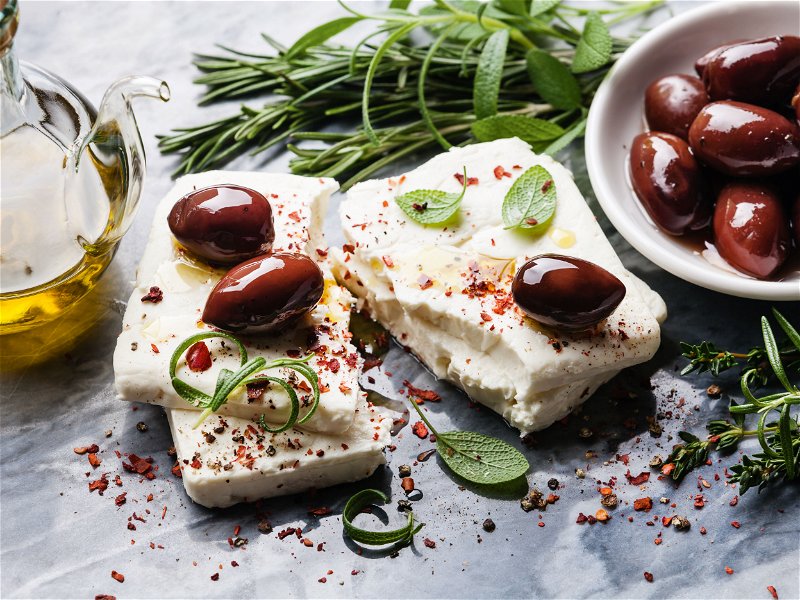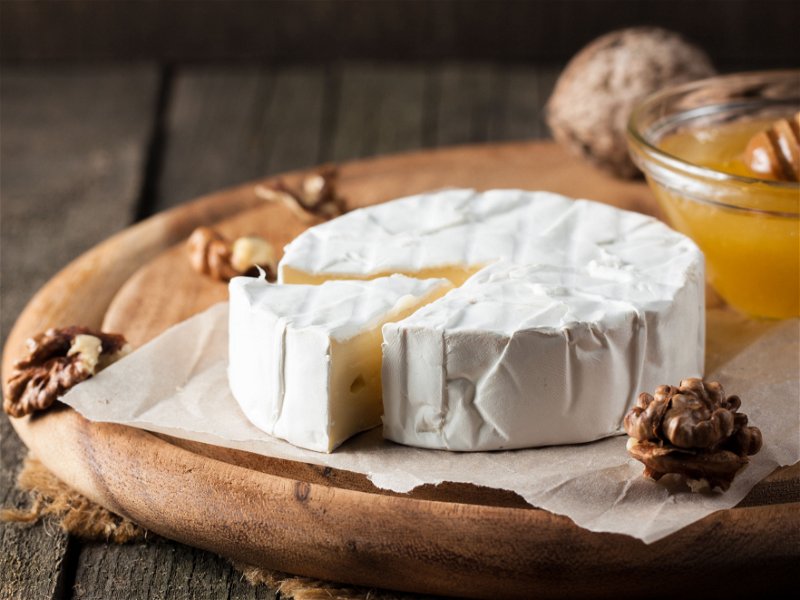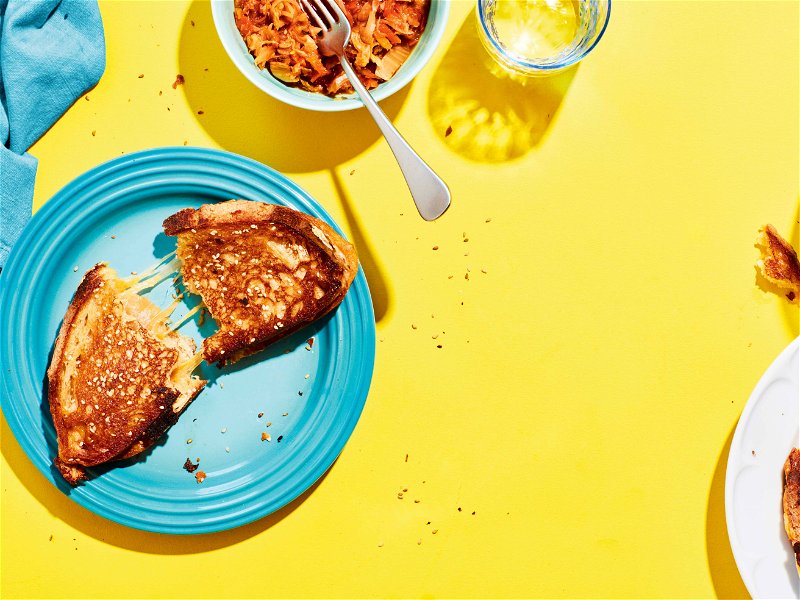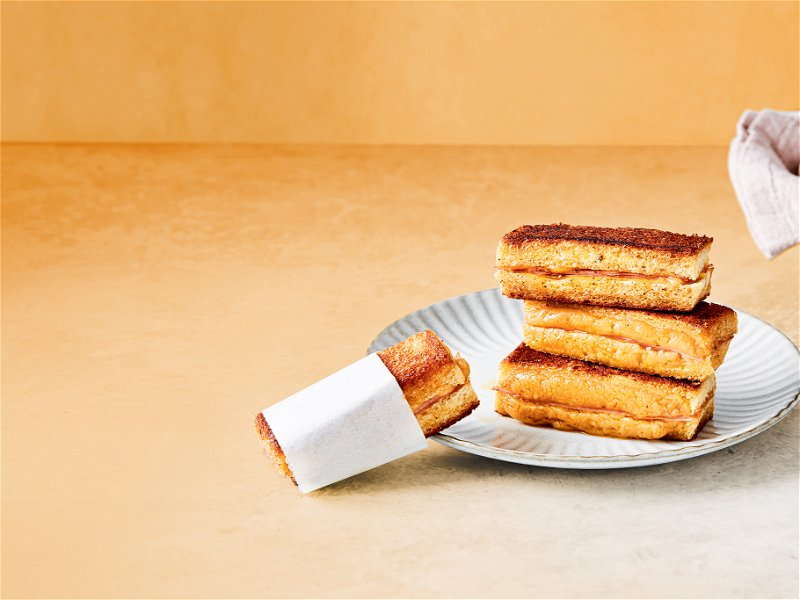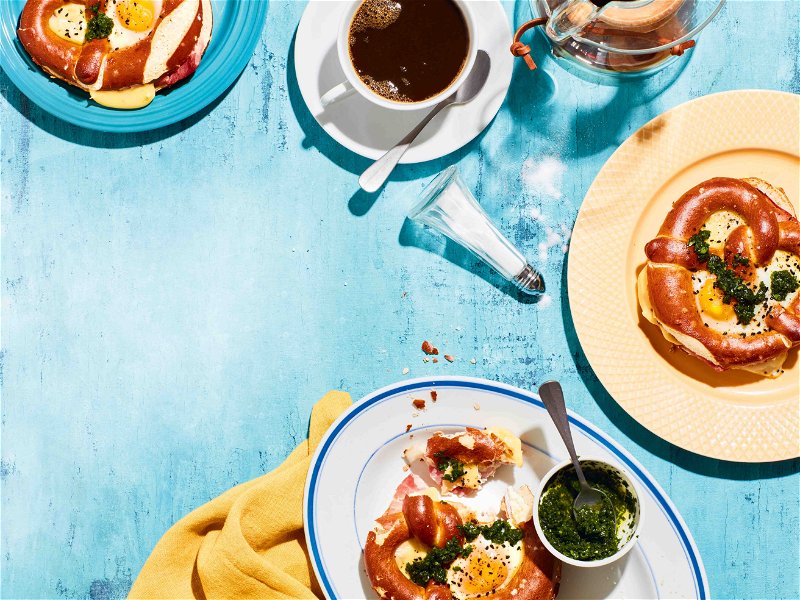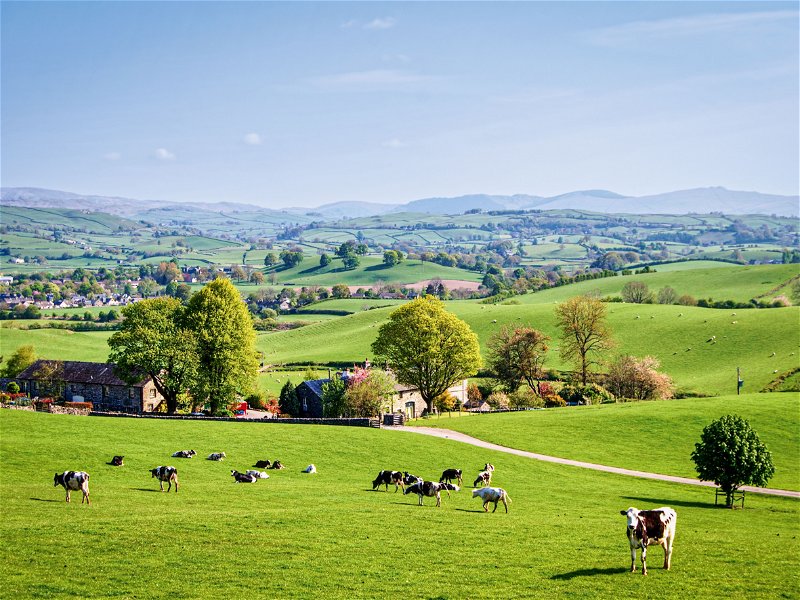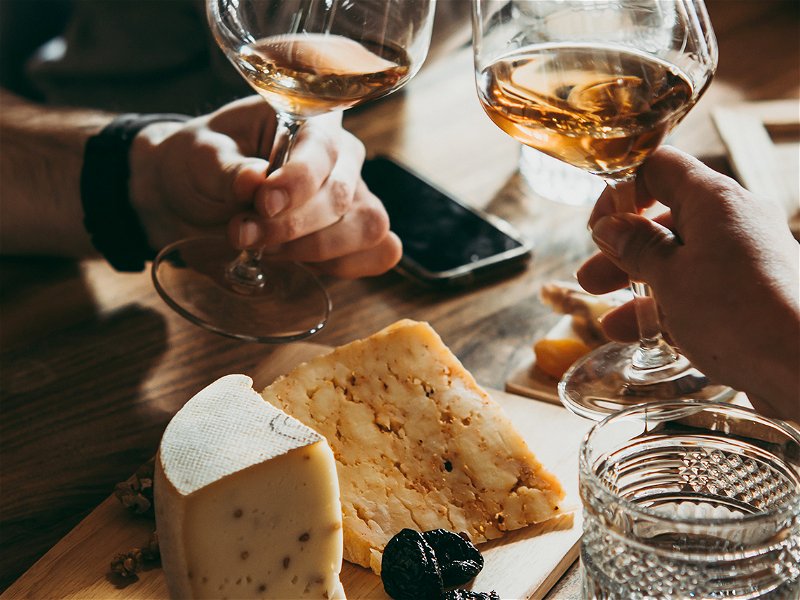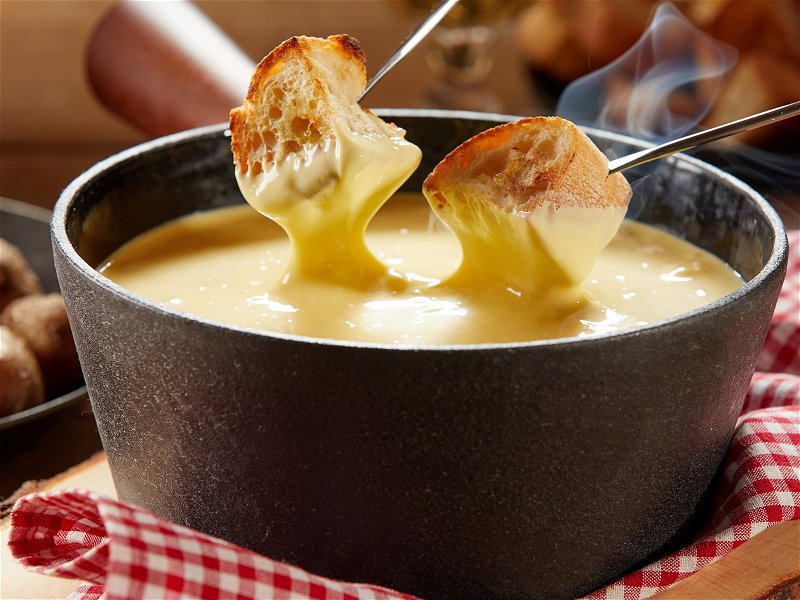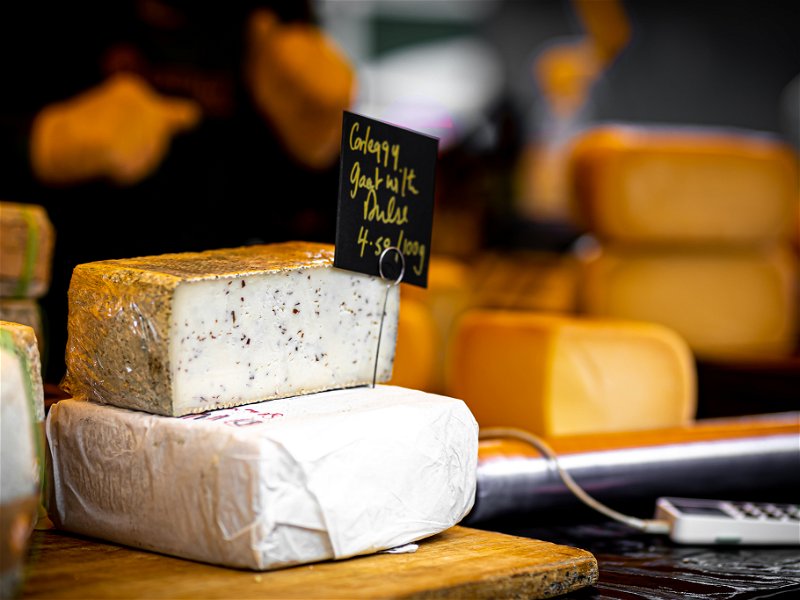You should know this cheese: Appenzeller
Appenzeller is one of Switzerland's best-known cheeses - not only because of its successful marketing campaign, but also thanks to its unmistakable, intense aroma. Only two people know the recipe for the herbal essence that gives it its special character.
Appenzellerland is one of the most unspoilt regions in Switzerland. Here, traditions such as the New Year procession up the mountain with richly decorated cows, and the wearing of traditional costumes are still practiced.
The "Appenzeller Käse" variety organisation also takes advantage of this. With an advertising campaign in which secretive Appenzeller farmers refuse to reveal the secret of the special taste - not even when Charlie Chaplin or Uwe Ochsenknecht ask. The recipe for the herbal brine used to condition the cheese is actually a secret! It is kept in a safe deposit box to which only two people have access.

Dairy farming has long been an important source of income in the Appenzell region, as the area around the Alpstein mountains is rich in green hills and mountain meadows - perfect for keeping cows. Cheese has been made here from their milk for centuries; as early as 1282, the monastery of St. Gallen obtained cheese from the village of Gais in the canton of Appenzell Ausserrhoden. However, it is likely that only small, dried sour milk cheeses were made back then. The use of rennet, which is essential for the production of hard cheeses, did not become widespread until the 16th century.
At that time, cheese in Appenzellerland, as in most mountain regions of Switzerland, was only made on the alp in summer. The cows found plenty of nutritious grass there and produced a lot of milk, which was processed to preserve it for the winter. During the Alpine cattle drive in September, the cheese wheels were taken down into the valley. Some of it was sold, as cheese was an important source of income for farmers at the time, while the rest was kept to provide for the family in winter. For a long time, cheese, bread and milk were the typical alpine pasture food in Appenzell.
Over time, advances in technology and the breeding of cows with higher milk yields made it possible to produce cheese in the valley all year round.
For a long time, the typical cheese of the Appenzellerland was "Rässkäse". It was usually made from semi-skimmed milk and rubbed or treated with brine during the long ripening period; the result was a hard cheese with a strong and intense flavour - "räss" in the local dialect. To this day, Rässkäse can be found both in Appenzellerland and in neighbouring Vorarlberg.
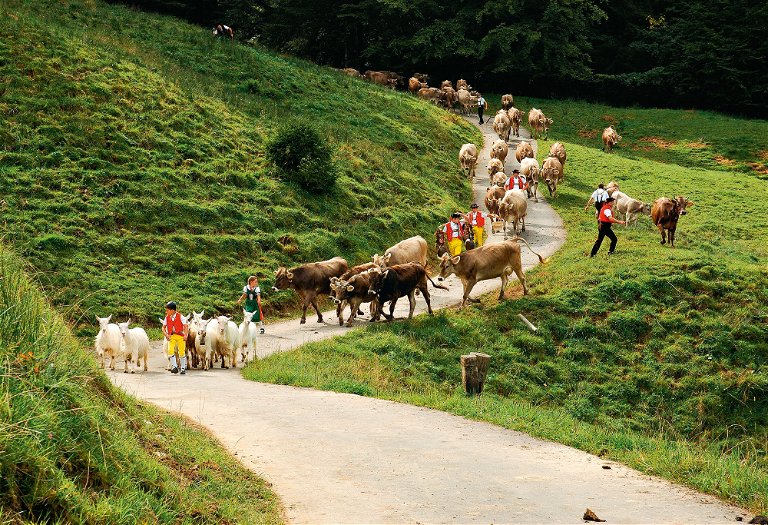
Birth of the Appenzeller
For a long time, Appenzeller cheeses were considered inferior. They often had a broken dough, smelled intensely and were riddled with holes. This only changed after the Second World War. Milk products were rationed to ensure that the Swiss population was fed. The responsible government authority recorded all types of cheese in Switzerland so that they could then be distributed. In 1942, the "Geschäftsstelle für Appenzeller Käse" (Appenzeller Cheese Office) was set up for local coordination, which is still responsible for sales today, albeit under the name "Sortenorganisation Appenzeller Käse" (Appenzeller Cheese Variety Organization). At the time, it aimed to standardise Appenzeller cheese in order to improve its marketability. Over time, a critically eyed, inconsistent local product became one of the most popular Swiss cheeses. Even today, each of the 40 cheese dairies that produce Appenzeller is a member of the variety organisation.
The basis is raw cow's milk with a fat content of around three and a half percent. The cows are only allowed to eat hay or grass; this is one of the reasons why Appenzeller cheese is no longer produced in the canton of Appenzell Innerrhoden - the hay spoils quickly due to the damp climate, which is why most farmers feed grass silage in winter.
In the cheese dairy, fresh morning milk is mixed with milk from the previous evening and heated to 31 degrees in a copper kettle, known here as a "cheese kettle", with constant stirring. Lactic acid bacteria and rennet are then added, which curdle the milk within 40 minutes. The curdled milk is cut into corn-sized pieces with a cheese harp, separating the curd from the whey. To extract even more whey from the curd, the mixture is heated to around 40 degrees in the cheese vat. The warm curd is then lifted out of the kettle and distributed into round moulds. These are pressed twice for 15 minutes to further remove whey from the dough. During the pressing process, each wheel is marked with the cheese passport, a quality seal that guarantees its traceability.
The secret herbal infusion
The cheeses are placed on a draining rack for 24 hours and then soaked in brine for two days. A rind has now formed and the cheeses are ready for maturing. This is where the secret herbal brine comes into play: the loaves are rubbed and turned every two days with a mixture of water, yeast, salt and more than 25 herbs, roots and spices.
From mild to fine spicy
For a long time, every family had its own recipe, but today every Appenzeller cheese is made with the same sulz. It is produced in the distillery of a well-known producer of herbal bitters. After five to seven weeks, the cheese dairies hand over their cheeses to the Appenzeller cheese merchants, who subject each wheel to a quality check and then take over the further maturing process. The cheeses are stored in special cellars with a constant temperature of 13 to 14 degrees Celsius and a humidity of more than 90 percent. They remain there for at least three months, during which time they continue to receive regular care.
A fully matured Appenzeller cheese has a reddish-brown, slightly moist rind and a few, evenly distributed, pea-sized holes. At the end of the three months, the first loaves are ready for sale as "Appenzeller Mild-Würzig", while others remain in the maturing cellar for over nine months and are sold as "Edel-Würzig". There are further stages of maturity in between.
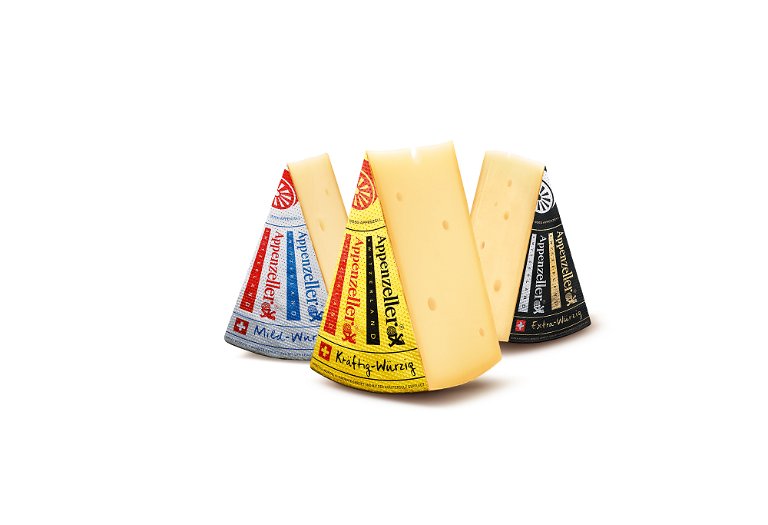
As in the past, Appenzeller cheese is still eaten today with a piece of good farmhouse bread and butter. However, the cheese also melts well and is therefore used in traditional recipes; Appenzeller Chäshörnli, cheese pancakes or cheese slices would not be complete without it. It goes well with beer, white wine, apple juice or cider. They are also traditional products of Eastern Switzerland, which used to be as much a part of the alpine dairyman's diet during the season as cheese, milk and bread.

